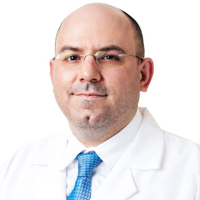Pharmaceutical and Biopharmaceutical Industries: Revolutionizing Healthcare
Published on: 27th December, 2023
The drug and biopharmaceutical enterprises play a pivotal part in transforming healthcare through the incident and delivery of creative cures and remedies. This item explores the key facets of these areas, stressing their impact on healthcare.Pharmaceuticals, outlined as wealthy secondhand in the diagnosis, situation, or stop of disease, aim to restore, correct, or refine everyday functions. On the other hand, biopharmaceuticals (or biologicals) circumscribe sugars, proteins, nucleic acids, living containers, or tissues and are curative devices that arise natural beginnings to a degree persons, animals, or microorganisms. In contrast to common pills combined with synthetic processes, biopharmaceuticals are primarily acquired through unaffected processes, containing extraction from living constructions or production utilizing alteration of genetic material Table 1.• Some usual biopharmaceuticals, originally gleaned from animals or persons, are immediately created through biotechnological advancements.• For instance, healing insulin, previously gleaned from porcine pancreatic islets, is immediately made utilizing alteration of genetic material in yeast (Saccharomyces cerevisiae) or E. coli.• Biopharmaceuticals caused by alteration of genetic material usually fall into three classifications:• Substances nearly equal to the body’s own key signaling proteins.• Monoclonal antibodies look like those caused by apiece human immune plan against bacteria.• Receptor builds (fusion proteins) established uniformly happening receptors connected to the immunoglobulin frame.Examples includeFrom living systems: Whole blood and ancestry parts, organs and fabric transplants, stem containers, antibodies for inactive immunization, polluted microbiota, human bosom milk, and human reproductive containers.Produced by recombinant DNA: Blood determinants, fabric plasminogen activators, hormones, hematopoietic growth determinants, interferon, interleukin-located produce, vaccines, monoclonal antibodies, tumor loss determinants, therapeutic enzymes.• Key dispute Pharmaceutical manufacturing• Biopharmaceuticals• Healthcare strike• Innovative medicines• Therapeutic fragments• Recombinant DNA technologies• Personalized cure• Gene medicines• Regulatory processes.
Senile Cataract
Published on: 2nd February, 2024
Cataracts may be described as the opacity of crystalline lenses present in the eye. The translucent crystalline lens is a part of the human eye. It possesses all the physical characteristics of a biconvex lens. The eye’s lens performs similar functions to a camera’s lens. The lens directs light rays entering the eye to the retina’s sensitive layers. Any factor that increases the absorption of scattering of light by the lens reduces its transparency. The opacity of the lens or its capsule, whether developmental or acquired, is called a cataract. Cataracts vary in degree of density and site and assume various forms. Cataract is the leading cause of reversible visual impairment and blindness globally. There are several classifications of cataracts based on morphologic and/or etiologic criteria. However, in epidemiologic studies, the simplified system of three types based on localization of lens opacities is most commonly used: Nuclear cataract is the most common type, followed by cortical cataract and posterior subcapsular cataract. This most prevalent form of acquired cataract, also known as an “age-related cataract,” affects people of both sexes equally and typically develops after age 50. More than 90% of people experience senile cataracts by age 70. Although one eye is almost always afflicted before the other, the disorder is typically bilateral. In the available literature, there is no mention of any such drug that could reverse the opacity of the lens (cataract) once it occurred and make it clear and transparent again.Only replacement of opaque lenses with artificial transparent Intraocular lens (IOL) is successful treatment of cataracts. This review focuses on senile cataracts and the best possible management of senile cataracts.
Large Cystic Dilatation of the Common Bile Duct
Published on: 19th March, 2024
Li B, Chen BW, Xia LS. The Initial Experience of Laparoscopic Management for Type VI Choledochal Cyst in Children. J Laparoendosc Adv Surg Tech A. 2024 Mar;34(3):280-283. doi: 10.1089/lap.2023.0229. Epub 2023 Oct 16. PMID: 37844069.
Dumitrascu T, Lupescu I, Ionescu M. The Todani classification for bile duct cysts: an overview. Acta Chir Belg. 2012 Sep-Oct;112(5):340-5. doi: 10.1080/00015458.2012.11680849. PMID: 23175921.
Dutta S, Jain A, Reddy A, Nelamangala Ramakrishnaiah VP. Anomalous Pancreaticobiliary Duct Junction in an Unusual Case of Synchronous Gallbladder and Bile Duct Malignancy. Cureus. 2021 Feb 13;13(2):e13331. doi: 10.7759/cureus.13331. PMID: 33738174; PMCID: PMC7959653.
Xia HT. Standardized Surgical Management for Cystic Dilation of the Bile Ducts Based on Clinical and Pathological Studies: A Narrative Review. Gastroenterol Res Pract. 2020 Sep 15;2020:3432786. doi: 10.1155/2020/3432786. PMID: 33014038; PMCID: PMC7512076.
Approximation of Kantorovich-type Generalization of (p,q) - Bernstein type Rational Functions Via Statistical Convergence
Published on: 19th March, 2024
In this paper, we use the modulus of continuity to study the rate of A-statistical convergence of the Kantorovich-type (p,q) - analogue of the Balázs–Szabados operators by using the statistical notion of convergence.Mathematics subject classification: Primary 4H6D1; Secondary 4H6R1; 4H6R5.
Laws of Pathophysiology of Migraine in the Third Millennium
Published on: 20th March, 2024
Science is the art of systematic and reproducible measurements, ultimately leading to knowledge supported by a holistic logic. Besides serendipity, there are 6 ways in general to obtain knowledge: authoritarianism; mysticism; rationalism, empiricism; pragmatism; and scepticism. Over the last 100 years, a canonical mythology – cortical spreading depression (CSD) – has prevailed in migraine pathophysiology. Conversely, a well-defined adaptive/protective role has evolved for CSD in locusts, Drosophila, and mammals. Additionally, an elaborate but entirely symptomatic nosologic system has arbitrarily evolved in migraine / primary headache. While the so-called systematic but symptomatic classification system of migraine / primary headache keeps on advancing the data-bank exponentially, the cause-effect nexus continues to obscure the most important systematic and insightful components of the knowledge of primary headache. The first step in advancing the cause-effect mystery of migraine / primary headache is to create a conceptual, consistent, and important adaptive-pathogenetic divide in the massive and disparate data-linked pathophysiology of the disorder. Once certain definitive principles (not laboratory/neuroimaging / genetic/epidemiologic data) emerge in the science of migraine / primary headache, we become empowered to understand the complex but key phenotypic blueprint as well as the neuro-pathophysiology / neuropsychiatry of the entity, including the visual (nasal visual-field sparing digitally-displaceable and eyeball-movement-synchronous scintillating scotomata), the lateralizing fronto-temporal-nuchal headache exclusively involving the ophthalmic division of the trigeminal nerve, and the associated features such as ‘stress’, ‘post-stress’, ‘autonomic storm’, ‘protean’ and ‘spontaneous’ onset and offset, and headache-aborting nausea-vomiting. In this manner, we have also evolved principles to begin to understand the most complex female predominance of migraine patients in adults [F:M=3:1] as well as the decline of prevalence in migraine attacks following menopause and advancing age. The Laws of the Pathophysiology of Migraine encompass the invaluable neurological / neuro-ophthalmological shift in pathophysiology from the brain to the eye.
The Accuracy of pHH3 in Meningioma Grading: A Single Institution Study
Published on: 26th March, 2024
Introduction: In the latest WHO classification of central nervous system tumors, Mitotic Index (MI) counted on Phosphohistone-H3 stained slides (pHH3-MI) has been suggested as a valid proliferative marker in various tumors including in the evaluation of meningioma grading.We aim to report our own experience in assessing the efficiency of the anti-pHH3 antibody as a grading tool for meningiomas.Methods: A retrospective study was conducted on a series of 40 meningiomas diagnosed from March 2020 to April 2021 at the Pathology Department of the Military Hospital of Tunis. We attempted immunohistochemistry and compared MI assessed on both pHH3 and HE-stained slides.Results: According to the HE-MI and pHH3-MI, the 40 cases of meningiomas were respectively divided into 35 versus 29 grade 1 cases, four versus eight grade 2 cases, and one versus three grade 3 cases. A highly significant correlation was found between pHH3-MI and HE-MI (p < 0.001). A significantly higher sensitivity in the pHH3 counting method was reported in our study. Discussion: we found, in accordance with the literature, that pHH3-MI is more reliable and accurate in mitotic counting, therefore exhibiting a high sensitivity in tumor grading, reported by an upgrade within 22,5% of the cases.Conclusion: PHH3-MI count facilitated a rapid reliable grading of meningiomas. However, molecular characteristics that could have a potentially significant impact on tumor progression should be the subject of further research.
Lecture: First Aid to the Population in Case of Traumatic Shock during Accidents, Catastrophes, Natural Disasters, and Terrorist Attacks. Anti-shock Measures in the Center of Mass Destruction and during the Evacuation Stages of the Subject Life Safety for Humanitarian and Technical Universities
Published on: 29th March, 2024
To prepare the population for first aid in case of traumatic shock, algorithms for the fundamentals of didactics of the educational topic “First aid to the population in case of traumatic shock during accidents, disasters, natural disasters and terrorist attacks” of the subject “Life Safety” are proposed. 32 years of experience in teaching the subject in humanitarian state educational institutions of higher professional education of a non-medical profile in the city of Syktyvkar are summarized. Educational questions are considered: 1) The concept of shock; 2) Traumatic shock; 3) Mechanisms of injury that contribute to the development of traumatic shock. Predisposing factors. Complications. At-risk groups; 4) Classification, phases, and degrees of shock; 5) Universal first aid algorithm; 6) Basic anti-shock measures in the source of mass destruction and at the stages of evacuation; 7) Features of anti-shock measures in children; 8) Typical first aid mistakes for traumatic shock. For each of the educational issues considered, a summary of the material presented is given. Depending on the purpose of studying the topic, purpose, content of educational material, and form of organization of training, the number of hours allocated to its presentation and study in various forms of the educational process is established. Their distribution includes 1 lecture (2 hours), 1 seminar (2), 1 practical lesson (2), and 6 hours of independent work by students.

HSPI: We're glad you're here. Please click "create a new Query" if you are a new visitor to our website and need further information from us.
If you are already a member of our network and need to keep track of any developments regarding a question you have already submitted, click "take me to my Query."
















